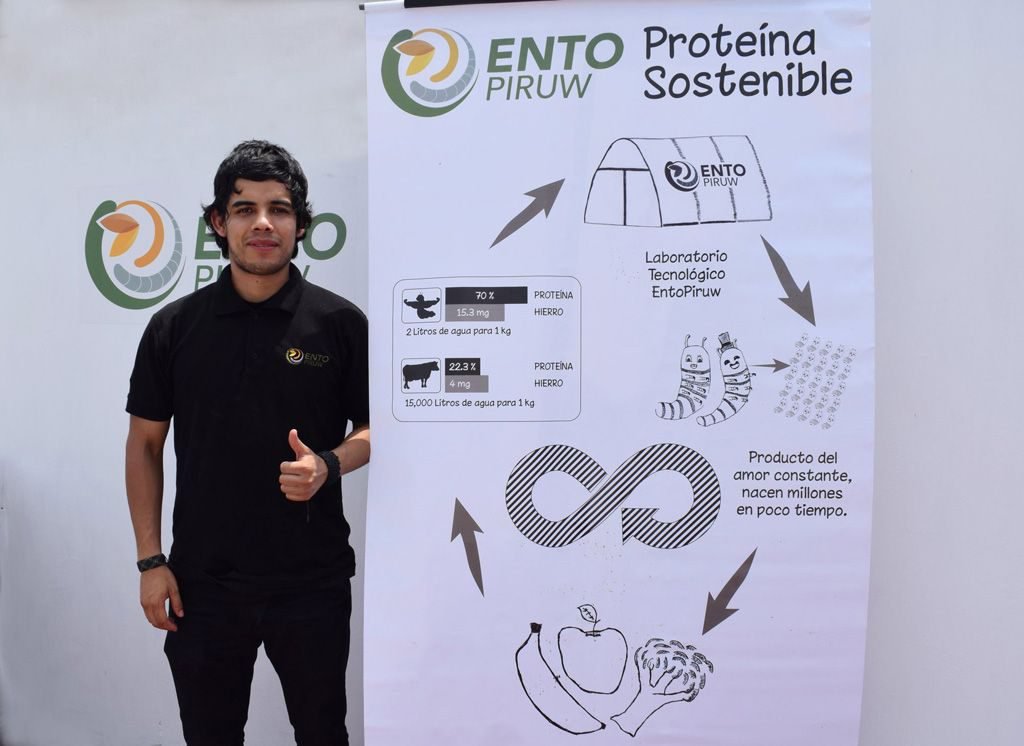It is estimated that by the year 2050, planet Earth will have at least, 9 billion inhabitants. To be able to feed all these people, food production will have to double. But the availability of the earth's surface is declining, overfishing decimates the oceans, and the climate crisis is cutting down agricultural efficiency. Given the above, in 2013 the Food and Agricultural Organization of the United Nations (FAO) advised in the raising of nutritional insects for human consumption. The breeding of these invertebrate animals favors the sustainable use of natural resources and, as a plus, they have an immense nutritional value.
So, after graduating as an agricultural engineer, young Peruvian Eduardo Lama decided to begin raising “Acheta domesticus,” a species commonly known as the domestic cricket, and commence the production of appetizers produced therefrom. Sadly, throughout the implementation he realized that the endeavor was not sustainable, so he swiftly let go of this particular focus. But that temporary setback didn't undermine his interest for the breeding of insects. He kept on going. This time, using the larvae of the “Tenebrio molitor” beetle, which he fed with fruit peels and vegetable skins discarded by local restaurants. In that same vein, Eduardo also developed a liquid made with organic substances that increases the voracity of the larvae. Cultivating the insects to grow faster, this progress has awarded him as one of the winners of the Latin American Innovators Under 35 from the MIT Technology Review LATAM edition.
Aside from contributing to the increase of proteins available for nourishment, the appeal Lama feels towards the consumption of insects has a strong environmental component. The young engineer explains, “People are not conscious of the ecological footprint of the food products they consume on a daily bases. Nobody feels the repercussions of what the production of groceries entail. Cow meat is going to become very expensive and we need alternatives. To be able to produce a single kilogram of cow meat between 15,000 liters and 22,000 liters of water are used. For insects we only consume 2 liters of water, which come solely from the peels and skins they are being fed with."
Nevertheless this is not the only advantage: the nutritional value of the insects being bred by Lama is superior to the value stemming from cow meat. “Tenebrio molitor” larvae are constituted by a 52% of protein versus 21% of bovine meat. Regarding iron, larvae has 15.34 milligrams for each 100 grams of product while beef only provides 1.9 milligrams of iron per 100 grams which translates to roughly eight times less.
Last but not least, the solution that Lama is putting out there also requires less space and green house emissions. “10,000 square meters allow you to feed two cows. Meanwhile, you can breed 1 million larvae in a single square meter due to vertical growth,” The young Peruvian engineer explains.
Through the start-up named “Ento Piruw," Lama sells crushed insects as a nutritional supplements presented as protein bars enriched with iron. He also supplies larvae to “Central”, the most renowned Peruvian restaurant, ranked as the best in America and the sixth best worldwide by “Restaurant Magazine”. Due to the success experienced, Lama is beginning to grow spirulina seaweed as algae and fungi.
Physics professor from the Andean University, Colombia, Carlos Ávila Bernal, a member of the jury for the 2019 Latin American Innovators Under 35 believes Lamas' project “has enormous potential to resolve the food sourcing crisis in many communities”.




